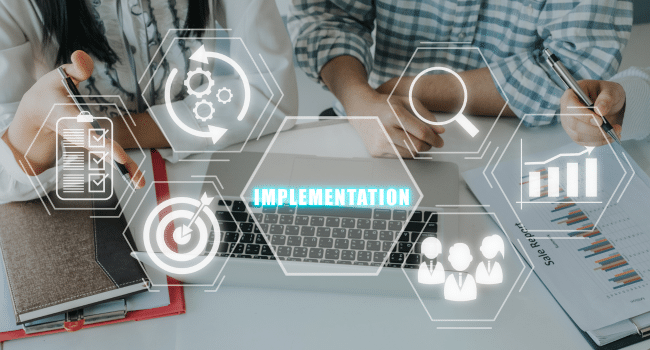Table of Contents
Implementing Product Lifecycle Management (PLM) software is a transformative step for any business aiming to streamline product development, enhance collaboration, and improve efficiency across its operations. As the digital backbone of product information and processes, PLM software integrates data throughout the entire product lifecycle, from inception through design, manufacturing, service, and disposal. However, the journey toward successful PLM integration is paved with challenges, from choosing the right software to ensuring seamless integration with existing systems. Here, we delve into key considerations that businesses must account for to ensure a smooth and effective PLM software implementation.
Selecting the Right PLM Software
The market is flooded with options from top PLM software companies, each offering unique features and capabilities. The first step in a successful implementation is selecting a PLM system that aligns with your business goals, industry requirements, and scalability needs. It’s crucial to conduct thorough research, compare different PLM solutions, and consider factors such as functionality, user-friendliness, and integration capabilities with existing tools. Engaging with stakeholders to understand their needs and pain points can also guide the decision-making process, ensuring the selected PLM software meets the diverse needs of different departments within your organization.
Once the right PLM software is chosen, the next step is to plan its integration meticulously. This involves setting clear objectives, defining the scope of the PLM project, and establishing a detailed roadmap that outlines each phase of the integration process. It’s important to consider how the PLM system will interface with existing software and infrastructure, including Enterprise Resource Planning (ERP), Customer Relationship Management (CRM), and Computer-Aided Design (CAD) tools. A phased approach, starting with core functionalities before expanding to more complex integrations, can help manage the complexity and reduce the risk of disruptions to business operations.
Managing Change and User Adoption

A critical aspect of implementing PLM software is managing the change it brings to organizational processes and workflows. Resistance from users accustomed to traditional ways of working can hinder the adoption of new systems. To mitigate this, it’s essential to develop a comprehensive change management strategy that includes training programs, clear communication of the benefits of the PLM system, and support structures to assist employees during the transition. Highlighting how PLM software can simplify tasks, improve collaboration, and lead to better product outcomes can help garner support and enthusiasm among team members.
Furthermore, fostering a culture of continuous improvement and innovation is key to maximizing the benefits of PLM software. Encouraging feedback from users and regularly reviewing system performance can identify areas for enhancement, ensuring the PLM system evolves with the business’s changing needs. Regular updates and training sessions can also keep users engaged and informed about new features and functionalities, promoting ongoing adoption and optimization of the PLM platform.
Ensuring Data Integrity and Security
Data is at the heart of any PLM system, making its integrity and security paramount. Implementing robust data governance policies is essential to ensure that data is accurate, consistent, and accessible only to authorized personnel. This includes establishing clear protocols for data entry, validation, and maintenance, as well as implementing advanced security measures to protect sensitive information from unauthorized access or cyber threats.
Moreover, integrating PLM software with existing data management systems can be complex but is critical for maintaining data consistency across the organization. Ensuring seamless data flow and synchronization between PLM and other enterprise systems helps prevent data silos, redundancy, and errors, facilitating more informed decision-making and efficient product lifecycle management.
Scalability and Future-Proofing

As businesses grow and evolve, so too do their PLM needs. Choosing a PLM system that is scalable and adaptable to future changes is crucial for long-term success. This means considering not only the current requirements but also anticipating future needs, such as support for new product lines, integration with emerging technologies, and the ability to handle increasing data volumes.
Investing in a PLM system that offers modular functionalities, flexible architecture, and compatibility with future technology trends can safeguard your investment and ensure that the PLM software continues to deliver value as your business expands and evolves.
Conclusion: Ensuring a Smooth PLM Journey
Implementing PLM software is a strategic initiative that can significantly enhance product development processes and operational efficiency. By carefully selecting the right PLM system, managing change effectively, ensuring data integrity and security, and planning for scalability, businesses can set the stage for a successful PLM integration. Although challenges are inevitable, a thoughtful approach that involves thorough planning, stakeholder engagement, and continuous improvement can pave the way for a smooth and successful PLM journey, ultimately contributing to the organization’s long-term success and competitiveness.
Read More on KulFiy
Precision and Accuracy: Unlocking the Potential of Solar System Design Software
